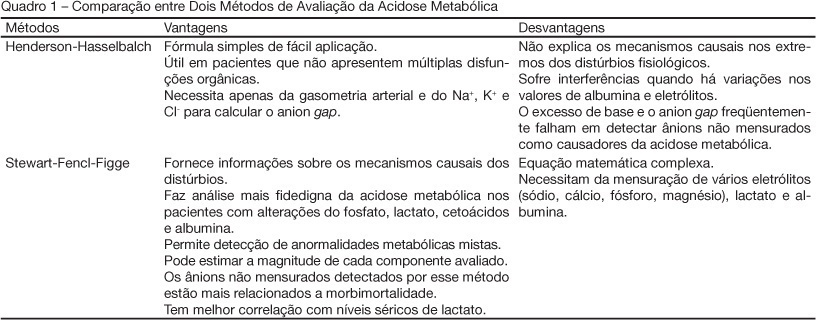
BACKGROUND AND OBJECTIVES: To review strategies of assessment of metabolic acidosis giving emphasis to the of Stewart-Fencl-Figge method versus the traditional method of Henderson-Hasselbalch. CONTENTS: Metabolic acidosis is a common issue in critically ill patients, an important cause of myocardial contractility depression and sensible marker of impaired tissue oxygenation. Traditionally, is evaluated by the Henderson-Hasselbalch approach in which an arterial blood sample provides information about the presence and type of acid base disturbance. However, this method is not always capable to explain the causes of the metabolic acidosis and, therefore, several studies have explored mechanisms to improve its interpretation. The Stewart-Fencl-Figge method calculated through a mathematical formula, where in addition to arterial blood gas levels, serum levels of electrolytes, lactate and albumin are used, supplies trustworthy information allowing detection of mixed metabolic abnormalities and quantification of the magnitude of each component, mainly in patients with multiple organic dysfunctions. In these individuals, the presence of unmeasured anions in the plasma is an important mechanism of metabolic acidosis and its early detection fundamental to avoid deleterious effect on the organism. CONCLUSIONS: The traditional Henderson-Hasselbalch approach fails in analyzing the underlying mechanisms of metabolic acidosis and possesses many variables that intervene with its result especially in the critically ill patient. The Stewart-Fencl-Figge method offers a broader analysis of metabolic acidosis, indicating its mechanisms and guiding a better therapeutically strategy. As an alternative, the albumin-corrected and lactate-corrected anion gap seems to be as useful as the Stewart approach in identifying the unmeasured anions.
Search
Search in:


Comments